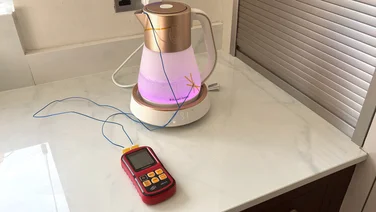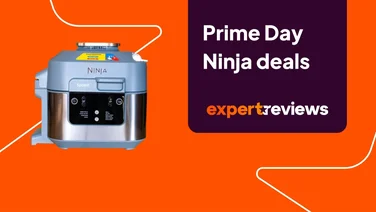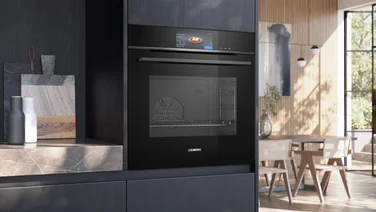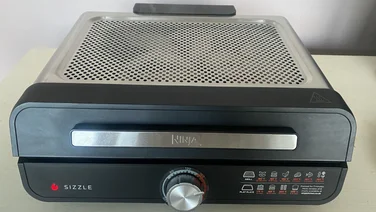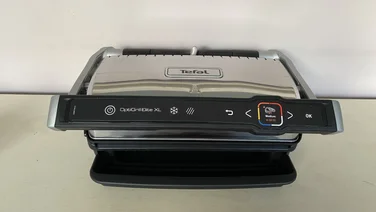To help us provide you with free impartial advice, we may earn a commission if you buy through links on our site. Learn more
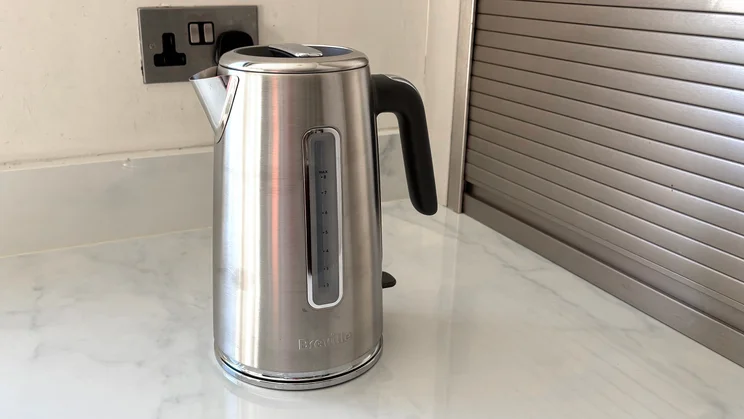
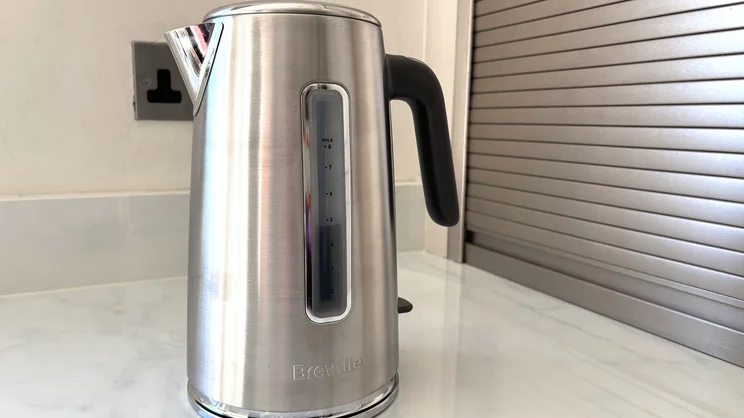
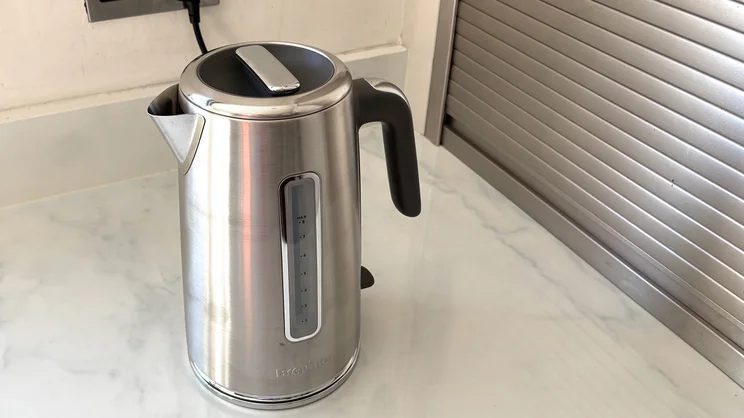
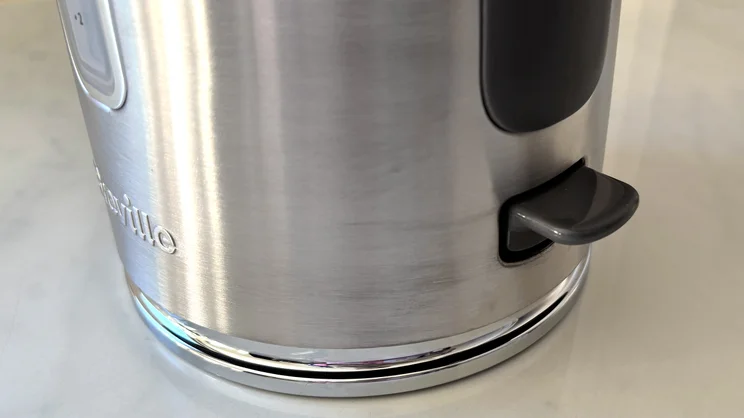
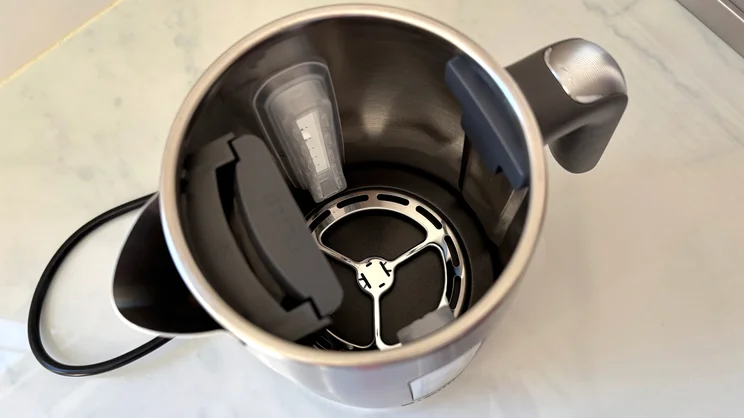
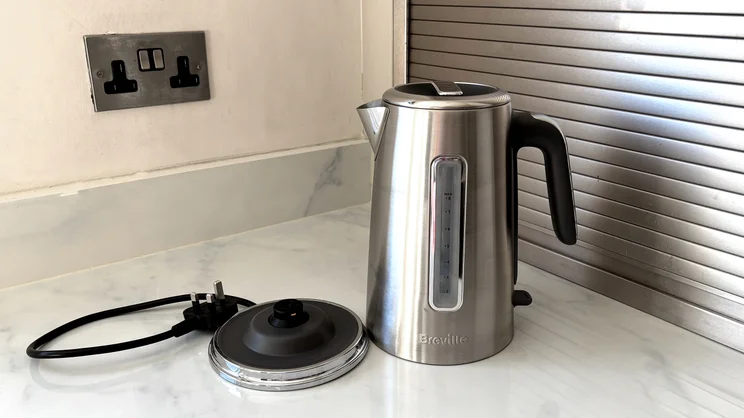
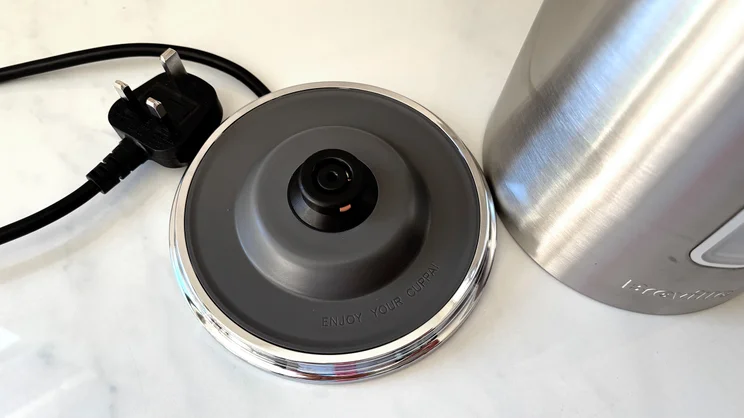
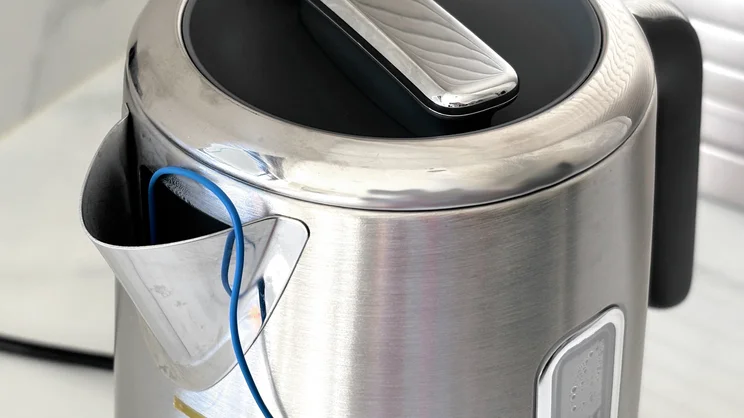
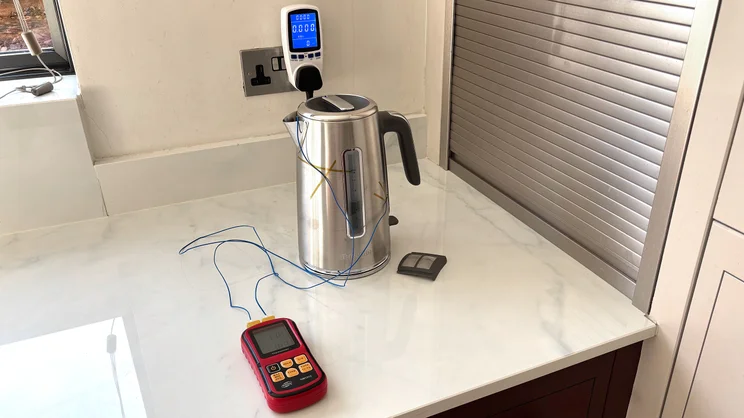
- Emits very little steam
- Robust stainless-steel construction
- Pours smoothly
- Doesn’t reach boiling
- Exterior stays hot
- No alert when finished
To boil water is to produce steam – often causing warping, stains or mould into the bargain if you don’t have a well-ventilated space. Not so, says Breville’s Edge Low Steam kettle. This heats water while using ‘steam surge control’, meaning that you’ll barely see a wisp emerge from the spout.
Given that even the best kettles will usually produce clouds of steam, this makes the Breville Edge Low Steam kettle useful where condensation is a problem; in places such as student accommodation, compact kitchens where kettles often have to tuck below wall cabinetry, and home offices.
Compared to its VKT232 Aura kettle, Breville estimates that the Edge Low Steam kettle produces 75% less steam. Plus, it’s also Quiet Mark approved, making it good for open-plan kitchens where the noise of a rumbling boil would be intrusive. Our tests suggested that it succeeds in this respect, but other issues make it a difficult recommendation.
Breville Edge Low Steam kettle: What do you get for the money?
In contrast to all those colourful plastic kettles, the Breville Edge Low Steam is made predominantly from stylish stainless steel. Only the on/off switch, handle, lid handle and base are grey plastic (while even there lashings of chrome have been added). There’s a little whimsy too: lift the jug and you’ll find a message on the base that reads ‘enjoy your cuppa’.









Because of its metal construction, the Edge Low Steam feels especially durable, although it’s a little weightier to lift than some (958g when empty, with a total weight of 1.3kg). Two water windows either side make it easy to see the fill level – although these are marked in cups, not litres (its max fill is 1.7l/eight cups) – and there’s a wide spout for filling if you prefer not to remove the lid. This has a removable metal mesh filter to keep limescale out of your drink.









Its minimum fill is a low 250ml (or one cup) but, disappointingly, this isn’t marked on either window – the lowest marking being two cups. While this means you won’t need to overboil if you’re just making a drink for yourself, you might want to keep a measuring jug or your cup to hand. Disappointingly, the manufacturer’s warranty is less than some kettles at only a year – but if you buy from Lakeland, this can be bumped up to three years.
What’s good about it?
I was sceptical when testing a kettle that claimed to produce far less steam than traditional kettles, but I was pleasantly surprised that it lived up to its claims. Of course, water can’t be boiled without producing any steam at all, but what the Edge Low Steam succeeds in is not emitting vaporous clouds from its mouth like other kettles do. Instead, only a wisp was visible, with slight condensation around its spout. It also poured smoothly and easily without any splashes.









I also liked the way the Breville Edge Low Steam kettle looked: its predominantly metal construction gave it a modern feel and it’s not too chunky at 21.5×16.2×26.2cm (WDH). It’s got a flexible 75cm cord and the wide twin windows make it easy to see how much water is filling it – although the cups don’t quite match up with their corresponding metric measurements (assuming one cup is 250ml): a measured litre of water didn’t quite reach the Edge Low Steam kettle’s five cup mark.
In our tests, the Edge Low Steam boiled a litre of water from cold in just two minutes 29 seconds before clicking off, making it fairly quick compared to some other kettles. This used around the same amount of energy as other 3kW kettles: 0.104kWh. At a rate of 25p per unit this would cost 2p.









There wasn’t too much noise either: boiling a litre of water, I measured a maximum noise of 56dB from one metre away, though it was a bit louder for 500ml (57.9dB). And while top temperatures were disappointing (more on this below), the water temperature was maintained reasonably well: after five minutes, I measured 90.8°C, dropping to 86.6°C after 10 minutes.
What could be better?
One of the downsides of the Breville Edge Low Steam kettle’s construction is that it becomes hot on the outside when in use – at click-off, I measured 90.5°C externally – and it stays hot. Even after 10 minutes, the exterior was 80.7°C and when I pulled off the tightly fitting lid, I burnt my hand by grazing it on the metal that surrounds the recessed plastic handle. In order not to repeat this injury, I donned oven gloves to touch it, which was far from ideal. Even the plastic strip on the body of the kettle by the main handle hold onto the heat.









My other big issue with the kettle is that the water never actually reached a boiling point of 100°C. My thermometer registered a high of 98.4°C when heating water from cold, while reboiling only reached 86.6°C. It’s also hard to tell when the kettle starts and stops heating as turning it on only requires a small press of the lever, and the light inside is fairly dim: on a bright day, I struggled to see it. And once it’s finished, there’s no alert or audible click off.
In addition to this, while the heating element is concealed, there’s a metal insert inside the kettle. This may be prone to gathering limescale in hard water areas (I noted a similar issue when reviewing the Russell Hobbs Calm Kettle).
Should you buy the Breville Edge Low Steam kettle?
If humidity is an issue in your kitchen and your priority is heating water without fogging up your windows and walls, the Breville Edge Low Steam kettle is a clever solution. Its minimal condensation and steam output could work wonders where ventilation is poor.
However, this brilliance has come at the cost of water never quite hitting boiling point. Plus, refilling after the kettle has finished means carefully negotiating a hot metal exterior and pull-off lid (unless you’re filling it at the spout). I’d always advise some caution when using a kettle, but you might need to be extra vigilant here. For a kettle that’s cooler to the touch when boiled, look for a dual-walled model, such as the Zwilling Enfinigy Pro.

